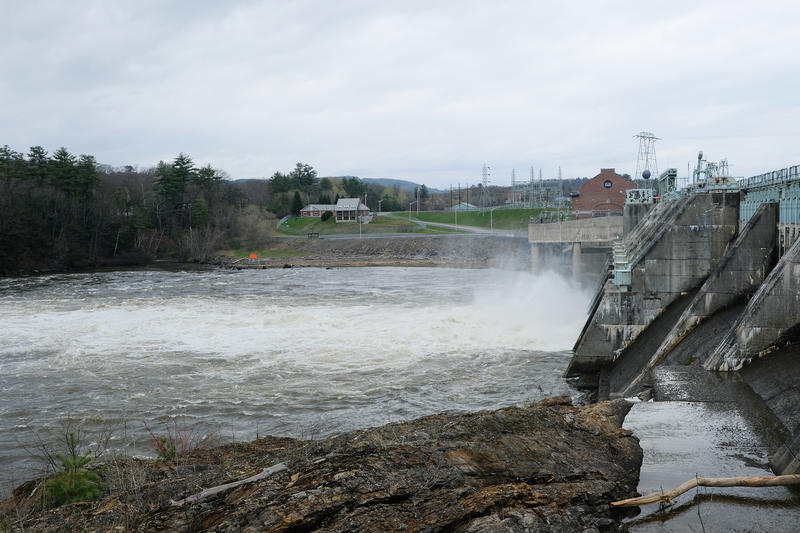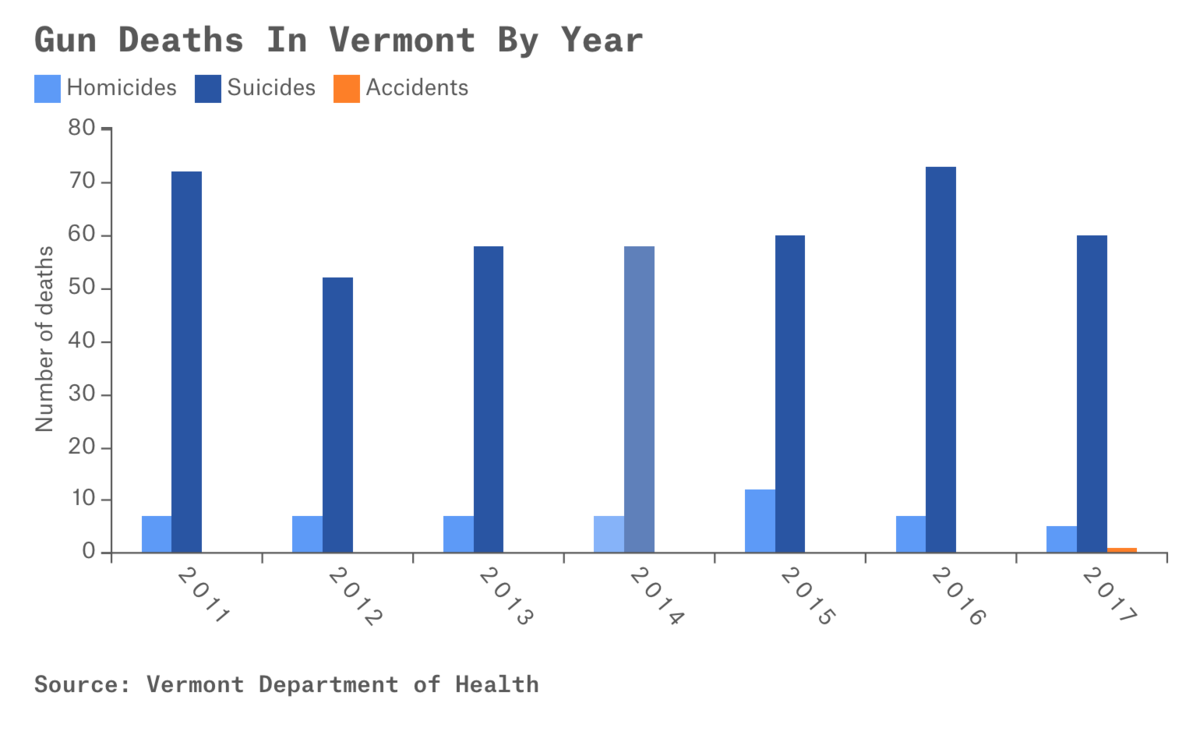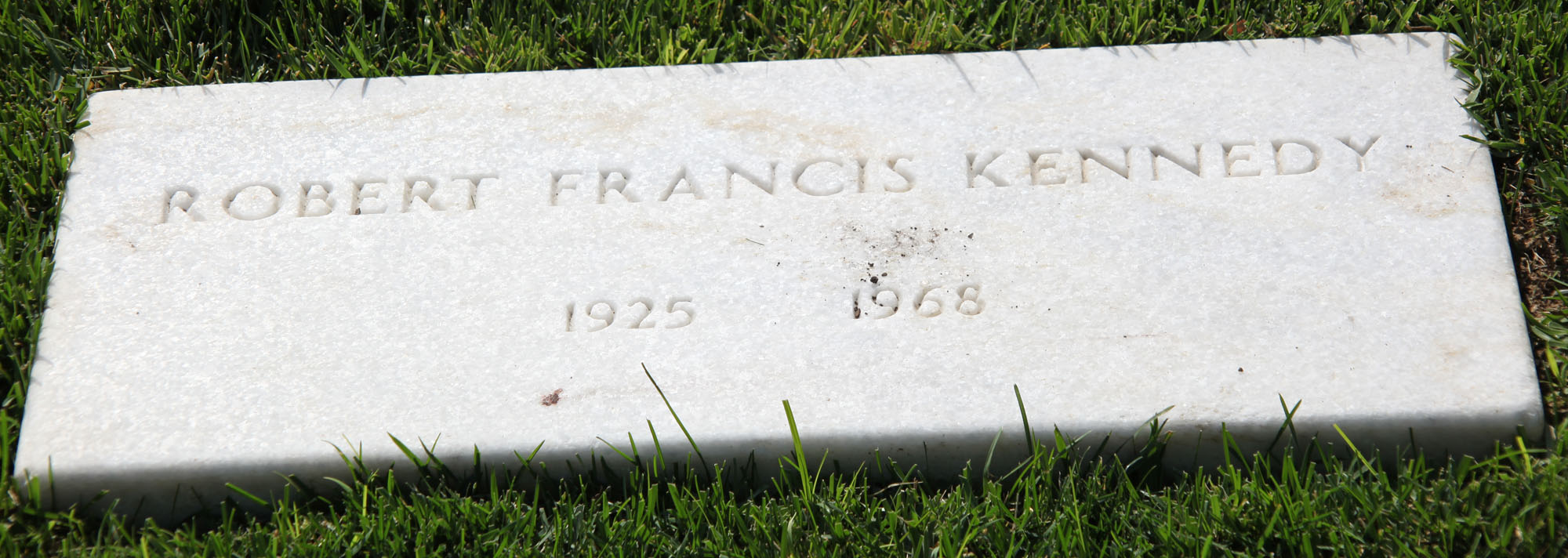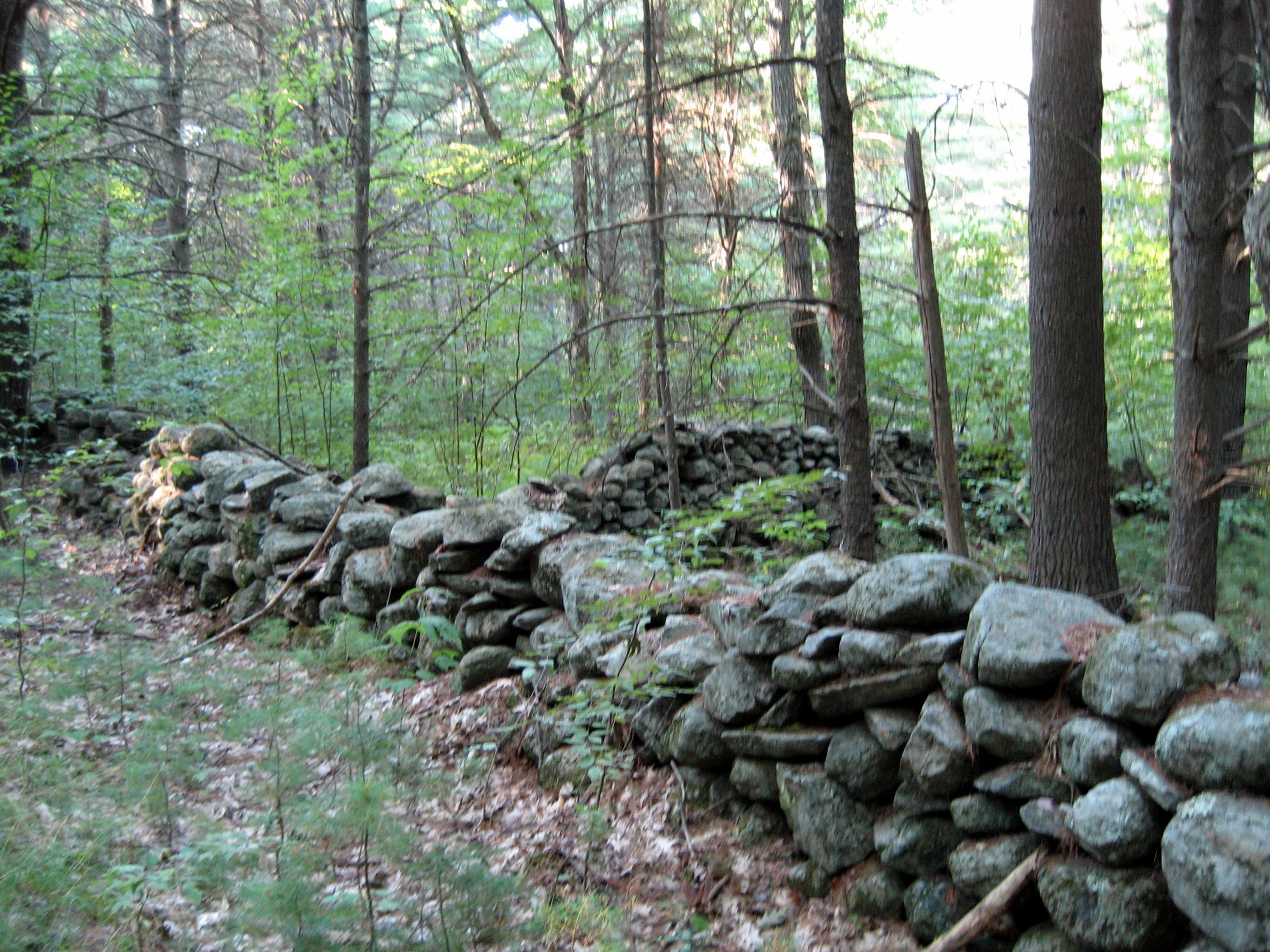Episode 97

This week on NEXT we look at two sources of alternative energy: hydroelectric power along the Connecticut River, and solar power in New England. We also discuss gun deaths in Vermont and New Hampshire and hear about an unlikely partnership that is working to reduce the rate of gun suicides. Plus, fifty years since the death of Robert F. Kennedy, we reflect on his legacy and visit an archive of his assassination. Finally, we debate the history of stone walls in New England and listen to a stonemason describe the work that goes into creating each one. It’s NEXT.
Hydro Dams Along Connecticut River Go Through Re-licensing
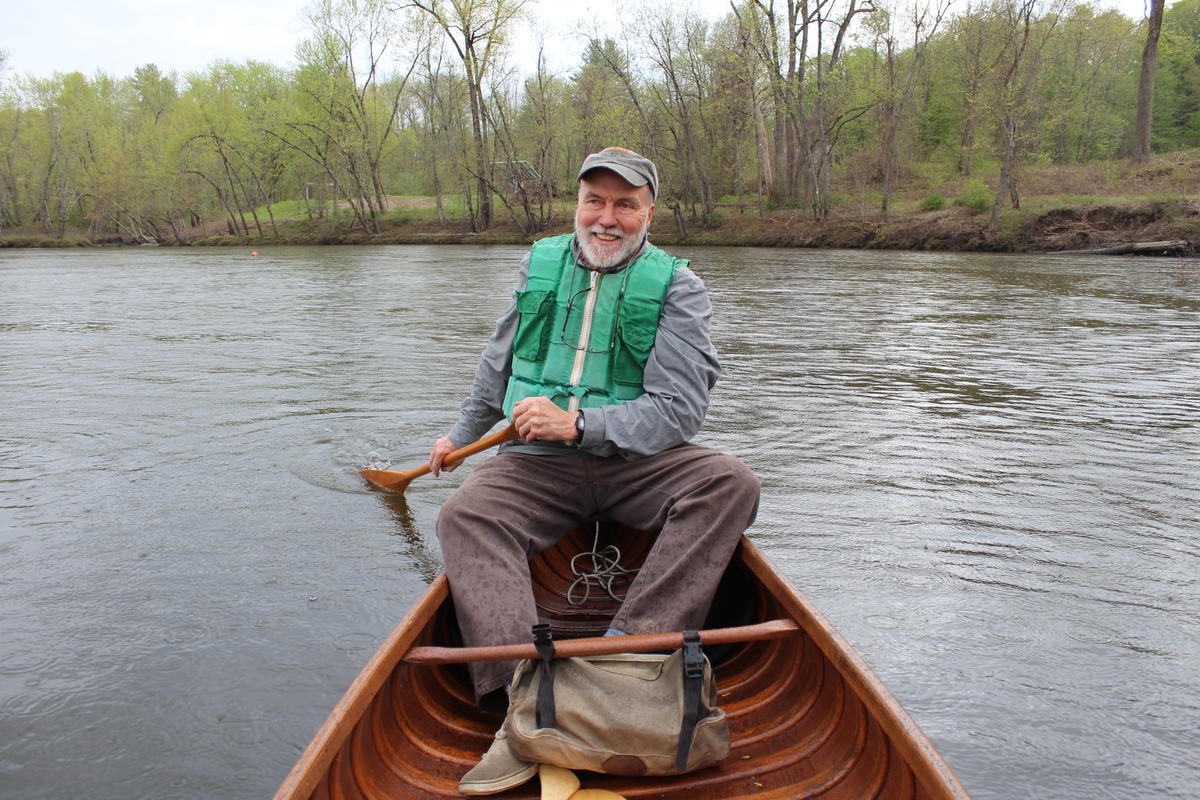
Norm Sims paddles one of his wood and canvas canoes on the Connecticut River. Photo by Annie Ropeik for NHPR
The Connecticut River is our region’s biggest river, and a long source of power as well as commerce and recreation. A group of hydroelectric dams along the River in New Hampshire, Vermont, and Massachusetts are undergoing a once-in-a-generation process: a federal re-licensing.
Residents who live near the dams are hoping that the company that owns the dams takes this opportunity to not only utilize hydroelectric power, but to protect local wildlife, and make it a better space for outdoor activities like whitewater paddling. New Hampshire Public Radio’s Annie Ropeik takes us on a tour of some of the dams around the region, and talks with people who live, work, and play nearby about what they hope might change.
Solar Power Reaches a Milestone in New England
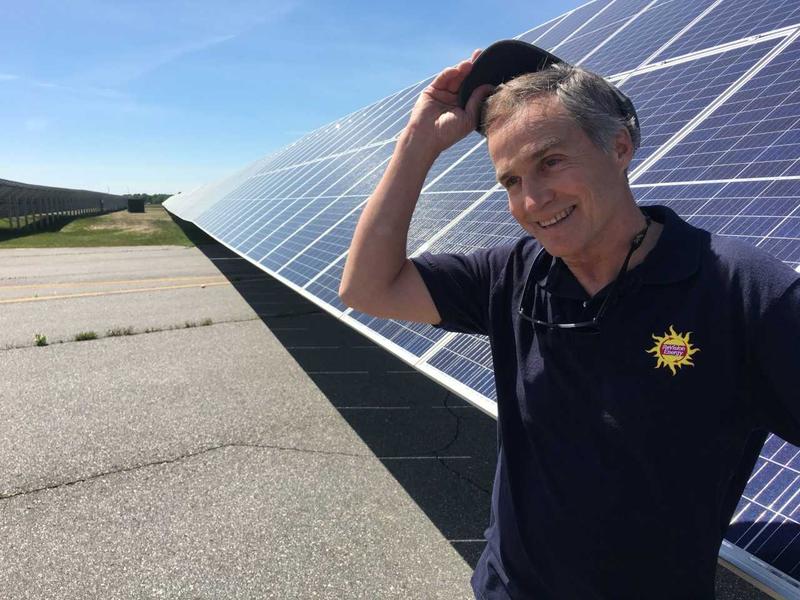
Steve Hinchman of ReVision Energy at the 1.5-megawatt solar plant the company installed at Brunswick Landing. Photo by Fred Bever for Maine Public
Hydropower is still a much bigger piece of New England’s energy mix than solar, but the industry is growing fast. And solar power’s emergence as an important feature of New England’s energy landscape just hit an important milestone. Normally the amount of power drawn from the regional grid is lowest at night. But one sunny day this spring, residential solar arrays flipped that pattern around — and the phenomenon will likely become more frequent in New England. Maine Public’s Fred Bever describes what happened, and why it has solar advocates cheering.
“Gun Shop Project” Works to Reduce Rate of Gun Suicides in New Hampshire
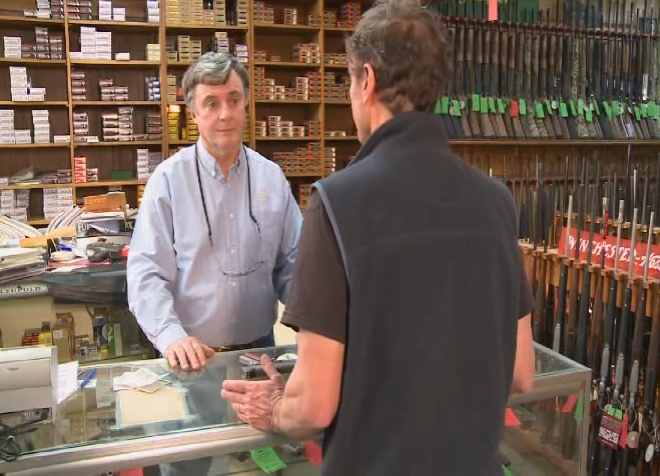
Ralph Demicco, the former owner of Riley’s Gun Shop in Hooksett, has teamed up with public health experts to broaden suicide prevention efforts. Here, he’s featured in a 2011 video about the launch of the “Gun Shop Project.” Photo courtesy of Nami New Hampshire
When we think about gun deaths in the United States, we usually think about mass shootings. But in many states, including New Hampshire, most gun deaths are suicides. This often overlooked statistic inspired “The Gun Shop Project,” an unlikely team of New Hampshire gun owners and public health experts who came together in hopes of curbing gun suicides. NHPR’s Lauren Chooljian discusses how the group was formed, and what they hope to achieve.
Guns Deaths in Vermont
Last year, Vermont Public Radio published an investigation into gun deaths in Vermont. VPR analyzed the data from all of the gun-related deaths in the state from 2011 to 2016. In that period 89 percent of Vermont’s gun deaths were suicide. VPR just updated this database with data from 2017. VPR’s Liam Elder-Connors joins us to talk about the data, and about what’s changed in Vermont.
Archive Documents the Assassination of Robert F. Kennedy

The index of the Robert F. Kennedy Assassination Archives Collection, created by Philip Melanson. Photo by Jon Kalish for the NENC
This week marks 50 years since the assassination of Robert F. Kennedy. While the controversy and conspiracy theories surrounding the death of his brother, John F. Kennedy, are well known, the murder of Robert Kennedy is much less familiar to the public. In 1984, Philip Melanson, a political science professor at the University of Massachusetts Dartmouth, created an archive devoted to RFK’s assassination. Today, the files serve as a valuable resource for those looking into alternate theories about the murder. Jon Kalish takes us to the archive.
Robert F. Kennedy’s Message of Hope
In the same year that Kennedy was assassinated, 1968, the Vietnam war was raging, Dr. Martin Luther King Jr. was assassinated, and Cesar Chavez, a leader for migrant farm workers, went on a hunger strike. Robert Kennedy, then a senator from New York, brought hope to the striking workers. WBUR’s Shannon Dooling reports on how Kennedy’s message struck a far different tone than today’s political discourse.
Debating the History of Stone Walls in New England
A few weeks ago, we discussed the history of architecture in New England with architect Duo Dickinson. In that conversation, he spoke about the history of our region’s stone walls, saying “Stone walls to me are the largest remnant of human failure in the world except for the pyramids. It’s the single largest complex of embodied human energy that now serves literally no purpose.”
This week, we hear a different opinion about the history of stone walls, from Tom Wessels. He’s a Professor Emeritus at Antioch University New England, and author of the books, Reading the Forested Landscape: A Natural History of New England and Forest Forensics: A Field Guide to Reading the Forested Landscape. We hear from him about the history of stone walls and the New England forest.
Building a Stone Wall
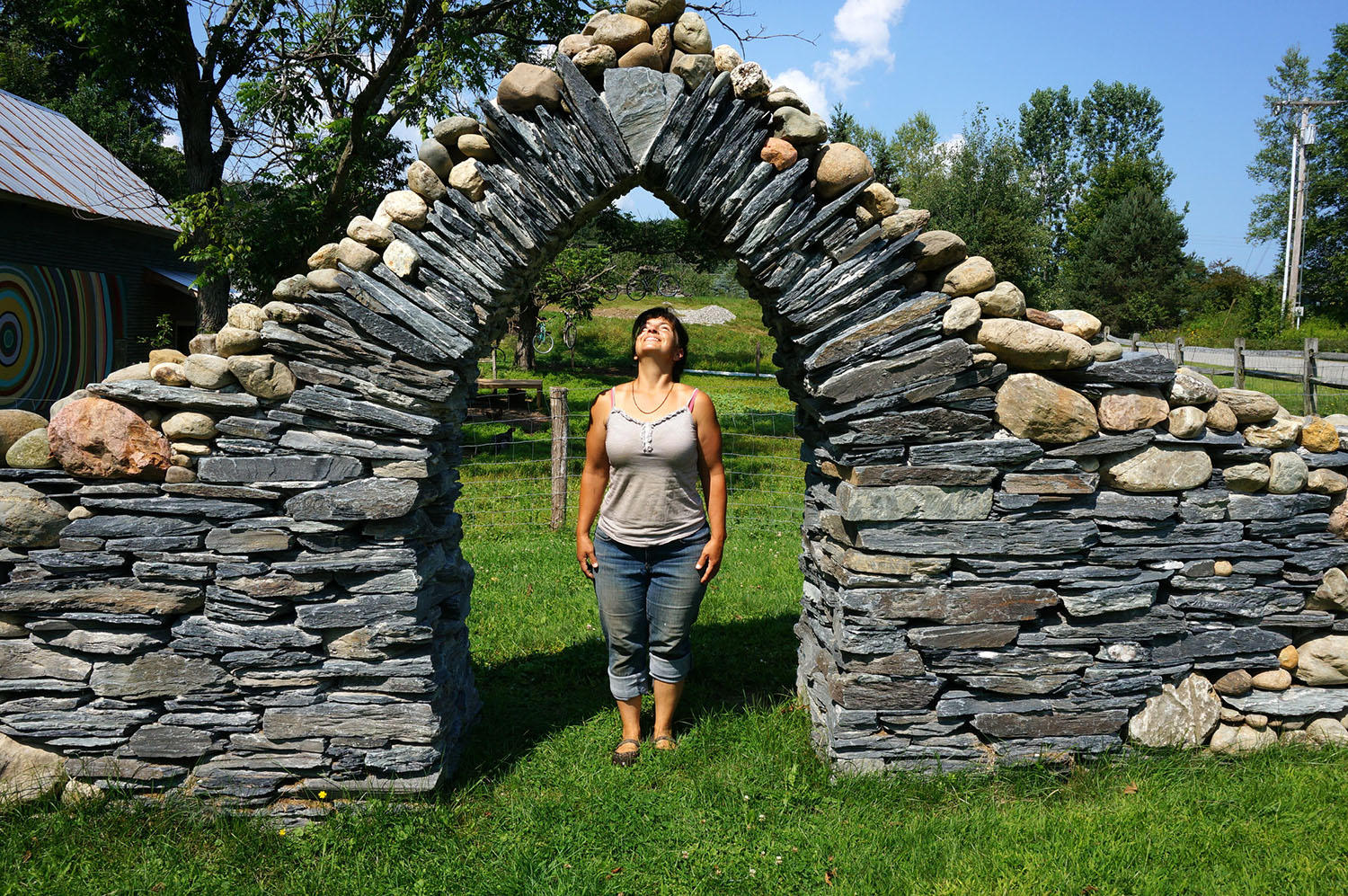
Thea Alvin is a “dry mason,” meaning she builds stone walls without using mortar. Photo by Amy Noyes for VPR
Thea Alvin is a dry stonemason from Vermont. She talks us through how she builds stone walls.
You can join us for a live NEXT event as part of the International Festival of Arts & Ideas in New Haven, Connecticut on Tuesday, June 12 at 5:30 PM at the Yale Center for British Art. We’ll be trying to get answers to a tough question: Is immigration good for the economy?
Photo at the top of the page: Whitewater rushes out of Wilder Dam, near Hanover, in early May. Photo by Britta Greene for NHPR
About NEXT
NEXT is produced at Connecticut Public Radio
Host: John Dankosky
Produced with help this week from Lily Tyson and Ali Oshinskie
Digital Producer: Carlos Mejia
Executive Producer: Catie Talarski
Contributors to this episode: Annie Ropeik, Fred Bever, Lauren Chooljian, Liam Elder-Connors, Jon Kalish, Shannon Dooling, Amy Kolb Noyes
Music: Todd Merrell, “New England” by Goodnight Blue Moon, “A Night in Mos Eisley” by Chris Thile
Stream every episode of NEXT. We appreciate your feedback! Send critiques, suggestions, questions, and ideas to next@wnpr.org. Follow us on Facebook and Twitter.

